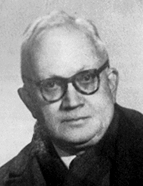

The relationship with French culture after 1640 arises from the vulnerability experienced during the period of union, sparking a defensive reaction that, alongside the political rupture, also results in a spiritual separation. The bilingualism that still persists among some authors after the Restoration — such as Friar António das Chagas and Francisco Manuel de Melo — gradually fades and so does the shared peninsular culture. But Robert Ricard is not satisfied with these historical arguments, and extends his studies to the duality that seems to exist between the areas of religious geography in the two countries. An area that he feels has not yet been explored. The Christianised north, with a religious practice identical to that of Spain and Italy, with its centre in Braga, was opposed by a de-Christianised region south of Porto and up to the Algarve, similar to that of most of France. This separation between the national idea and the Christian idea in Portugal may help explain the penetration of philosophical liberalism and secularism, which have left a lasting mark. And from there to the need to explain the lack of religious vocations is a step that Robert Ricard never fails to take. Always looking at history and observing what's around him. Erudition also in the contemporary, one might say.
In the field of the history of spirituality — in his own words — he focuses on the writings of Prince Fernando (the Holy Prince), Prince Pedro and the Livro da Virtuosa Bemfeitoria on Prince Luís (son of King Manuel I), Friar Bartolomeu dos Mártires (through Friar Luís de Sousa, who translated and annotated the Anais de D. João III [Annals of King John III]), Friar António das Chagas, and Father António Vieira, along with Soror Joana da Cruz and Father Manuel Bernardes, among others — including Friar Heitor Pinto, Friar Luís de Granada, Luís António Verney, Teodoro de Almeida, Camilo Castelo Branco, and Miguel de Unamuno, a contemporary to whom he gives special attention. In particular, we sought to define the precise meaning of these spiritual practices, as well as the readings and external influences — namely those of the Northern Mystics — on the spirituality observed among the Portuguese in the 16th and 17th centuries (Études sur l’histoire..., pp. 205-221). And many other aspects. The detailed enquiry into the Virtuosa Bemfeitoria [Virtuous Benefaction] — prepared with great care and detail — as is usual — succeeds in highlighting the sources that Prince Pedro and his collaborator Friar João Verba would likely have used: evidently, the De beneficiis by Seneca, the Old Testament as a whole, the Gospels of St Matthew and St Luke, texts by St Paul, Aristotle and Cicero, St Augustine and St Thomas Aquinas. Nevertheless Virtuosa Bemfeitoria is "to a large extent an original work that contains an important personal contribution" by the Prince (Études sur l’Histoire, pp. 120-122). That way one becomes more familiar with him. Robert Ricard had a wealth of information that made it difficult for his erudite analyses to be contradicted (or even to be contradicted at all). Because the documentary evidence for the conclusions they allowed was presented as self-evident. Without being exaggerated or allowing extrapolations. And that's what counted, in the rigour he was aiming for. And he did achieve it. Trying to make his knowledge and analyses available to specialists from other areas. This is the case, for example, with the Virtuosa Bemfeitoria "which in many respects is linked to political philosophy." Although this wasn't his object, he did summarise the main interpretations of Prince Pedro's book in order to make it easier to study (Études sur l’Histoire, p. 123). Because for Robert Ricard, one does not need to consider just one facet of a work, but its entirety. Not linked to the Annales or any later proposal for a new history, it is nevertheless to these innovative movements that he draws close — while retaining the old scholarly procedures that structure his hermeneutics with a finesse that is hard to match.
This work is financed by national funds through FCT - Foundation for Science and Technology, I.P, in the scope of the projects UIDB/04311/2020 and UIDP/04311/2020.
